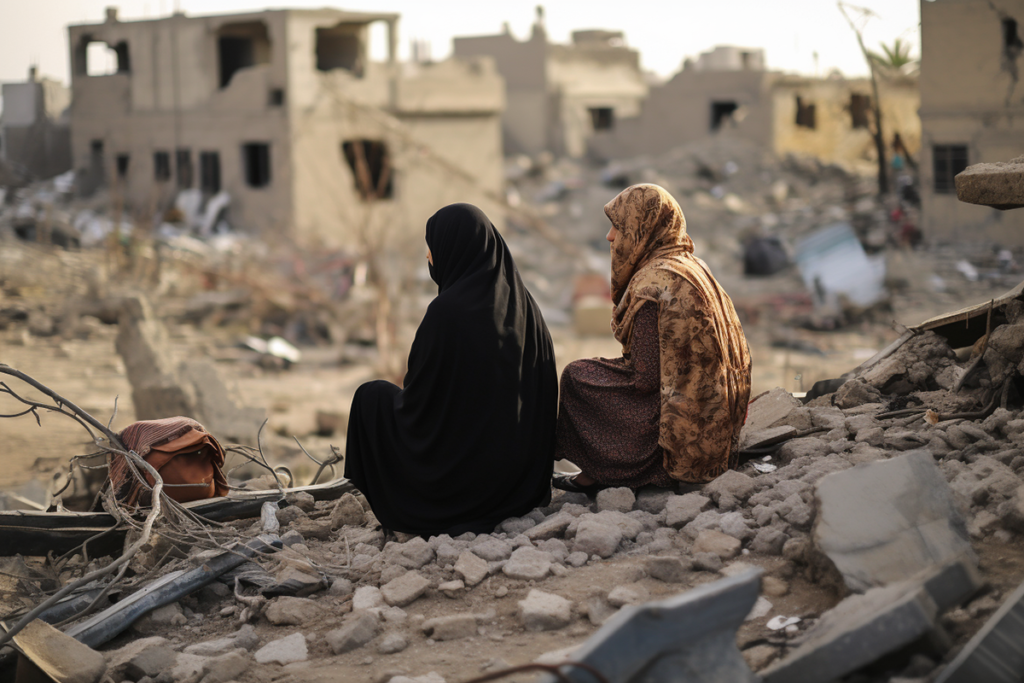The United States and Israel have initiated talks to devise a potential timeline for the gradual reduction of intense combat operations in their ongoing war against Hamas in Gaza. This development comes as both nations grapple with the grim realization that the broader conflict is likely to persist for several more months, all while the United States expresses growing unease over the steadily rising death toll in Gaza.
One of the central themes of these discussions revolves around the governance of Gaza should Israel succeed in its objective of ending Hamas’ control over the region. This represents the first instance in which Washington has offered some insight into its vision for the security arrangements that could be established in Gaza. Notably, one of the ideas floated during these discussions is the possibility of reinstating Palestinian security forces, who were forcefully expelled from Gaza by Hamas during its takeover in 2007. However, this particular proposal is expected to encounter formidable opposition from Israel, which is determined to maintain its security presence in the region.
During recent meetings with Israeli leaders, U.S. National Security Adviser Jake Sullivan delved into the details of a prospective timetable for winding down the intense combat phase of the conflict. Israeli Defense Minister Yoav Gallant mentioned that it could take several months to achieve the goal of defeating Hamas, although it remains unclear whether this timeline pertains specifically to the ongoing phase of heavy airstrikes and ground battles.
The ongoing offensive, initially triggered by a significant Hamas attack on Israel in October, has inflicted substantial damage upon northern Gaza and prompted the displacement of approximately 80% of the region’s 2.3 million inhabitants. This mass displacement has engendered a severe humanitarian crisis, with most of the displaced individuals seeking shelter in the southern areas of Gaza.
The Biden administration has conveyed its deep concerns regarding Israel’s struggles to minimize civilian casualties and its future plans for Gaza. Notwithstanding these concerns, the United States continues to extend its support to Israel through the provision of weapons and diplomatic backing.
Hamas’s resilience has been forcefully underscored by a recent deadly ambush on Israeli troops in Gaza City, raising doubts about Israel’s ability to vanquish the group without causing extensive collateral damage to the entire region.
According to the Gaza Health Ministry, the Israeli air and ground offensive over the past ten weeks has resulted in a staggering toll of more than 18,700 Palestinian casualties. Notably, these figures do not differentiate between civilian and combatant casualties, and there is no specific breakdown regarding the number of women and minors among the casualties.
The communication infrastructure in Gaza remains severely disrupted, with Israeli airstrikes and tank shelling persisting, even in densely populated areas where Israel had previously advised Palestinians to evacuate.
Meanwhile, the United States is actively exploring various postwar scenarios, including the revival of the Palestinian Authority. Nevertheless, Palestinian President Mahmoud Abbas, who lost control of Gaza to Hamas in 2007, remains deeply unpopular among Palestinians.
The United States envisions the eventual establishment of a unified Palestinian government that encompasses both the West Bank and Gaza, serving as a precursor to Palestinian statehood. However, it is crucial to note that this concept is resolutely rejected by Israeli Prime Minister Benjamin Netanyahu’s right-wing government.
In light of these developments, the situation in Gaza remains highly intricate and fraught with uncertainty. Ongoing discussions and concerns persist, encompassing civilian casualties, the future governance of the region, and the elusive prospects for peace in the Middle East.


